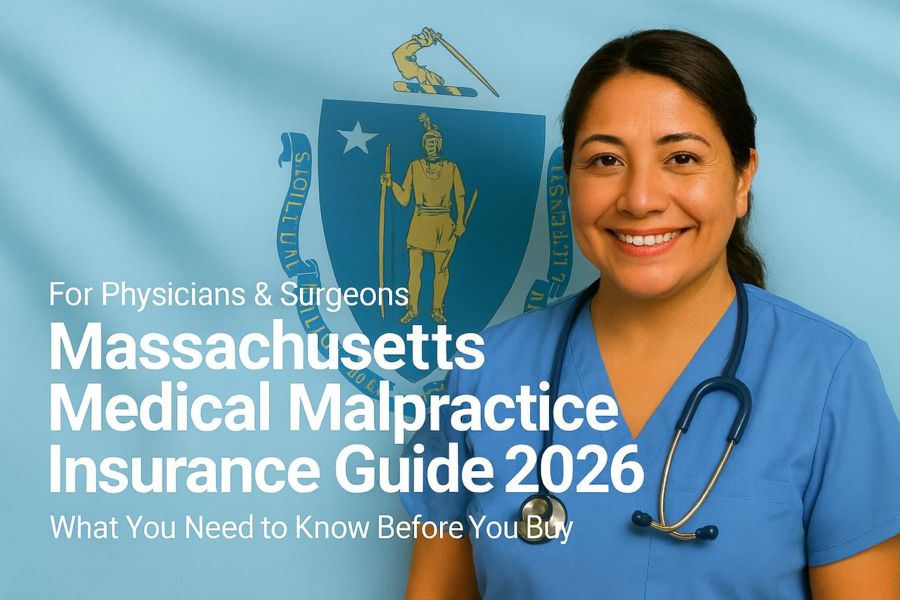Physicians looking to practice in a more relaxed atmosphere may be considering opening their own private surgical practice. According to the American Medical Association, close to 46% of practicing physicians owned their own practices in 2018. Additionally, nearly 65% of surgical subspecialists own their practices, as do 54% of ob-gyns. Although the trend has been on the decline for the last decade, opening a private practice remains a viable choice for many reasons.
For most physicians, freedom is one of the largest advantages of entering into private practice. Managing patient cases through diagnosis and treatment requires both effective collaboration with colleagues and the room for independent judgment. A practice owned by physicians rather than by a health system remains a strong option for those that want to work with like-minded colleagues and set their own hours. Decisions can be based on care instead of hospital policy, and processes and policies can be changed and enacted much more quickly because they are more autonomous.
In addition, private practice can be a particularly lucrative avenue for surgeons who are looking to increase their revenue streams through ancillary services. For example, ancillary revenue for orthopedic surgeons could include imaging centers, physical therapy, surgery centers, and other rehabilitative services, and could also be supplemented through consulting work with device companies, all of which would not be available through employment with a hospital system.
If you are ready to take the leap into more autonomy, read on to explore five states to consider when establishing your private surgical practice location.
#1 Florida
Florida continues to rank among the top states to be a physician for several reasons:
No personal income tax
Florida is one of seven states that does not levy an income tax, so the more you make in your practice, the more you keep. Historically, states that have no or low personal income tax fair better at creating jobs and keeping young, educated workers in the state. In fact, The American Legislative Exchange Council reports that over the last ten years, states without a personal income tax have “consistently outperformed – on GDP growth, employment growth and in-state migration – the nine states with the highest taxes on personal income”. One thing to watch out for – property taxes in Florida are higher than the national average to compensate for the lack of personal income tax.
Repealed CON laws
Dating back to 1964, CON (Certificate of Need) laws originated in New York, and mandate that healthcare providers obtain consent before entering certain markets. Providers are required to demonstrate the need for new or expanded health care services in a community before consent is granted. However, Florida is following in the footsteps of other states and has recently repealed major portions of some CON requirements, leading to a decrease in the cost of healthcare, better and more appropriate care, and improved patient outcomes.
Abundance of older patients
As the fourth most populous state in the nation, Florida is distinguished by its irregular age structure; 19.4% of the population is age 65 or older, a proportion higher than any other state. An older population needs far more health care services than a population that skews younger, and as many doctors also plan for their own retirement, a physician shortage in the state will open new possibilities for independent practice. According to the American Medical Association, “almost 30 percent of the state’s physicians are at least 60 years old, with only about 10 percent under the age of 35, with an estimated 5,000 6,000 Florida doctors retiring in the next five years”.
#2 Texas
With the highest number of solo practitioners than any other state, many surgeons find Texas a hospitable place to open a private practice. Reasons include:
Low malpractice insurance rates
Texas ranks highly as a state with quality medical care. Quality of care is indicated in part by a relatively small number of disciplinary actions and an even smaller number of malpractice payouts. Insurance rates for practicing medical professionals in Texas tend to be well below the national average due to Texas’ tort reform and caps on damages.
High number of elective surgeries
Two Texas cities, Houston and San Antonio, rank among the top cities across the country with populations most interested in plastic surgery. As the second most populous state, private practice surgeons have ample opportunity in the state to benefit from high rates of elective surgery. Texas’ population continues to grow, and over the past decade the state’s population increased by about 4 million, partly because so many people move from California to Texas. A growing population coupled with a projected shortage of physicians makes the state an attractive place for independent surgeons who are considering starting a private practice.
Stable compensation and career opportunities
Medical professions are some of the most lucrative for residents of the state, with eight of the top ten highest-paying jobs in Texas falling into this category. If you’re thinking of starting a private practice here, orthopedic surgeons are some of the highest-paid positions in Texas. In addition, Texas ranks seventh in the country for the average monthly starting salary for physicians, making the state an attractive place to start a career. Furthermore, the demand for doctors is high. The Texas Higher Education Coordinating Board recently indicated that the need for physicians will quickly outpace the supply of candidates enrolled in medical schools and resident positions in the state.
Tax Structure
Texas is frequently thought of as a tax-friendly state because it does not levy an income tax. Keep in mind that the state compensates for this with higher sales and property taxes. Surgeons thinking of opening a private practice in Texas also need to consider the state’s Franchise Tax, which can be used to a provider’s advantage.
One perk of this tax plan is that healthcare entities grossing less than $1 million are not liable for the Franchise Tax, and eligibility is often accomplished through revenue exclusions. The state’s revenue exclusions follow these guidelines: exclusions of 50 to 100 percent of payments received from Medicaid, Medicare, CHIP, the state workers’ compensation program or the TRICARE military health insurance system are allowed for revenue exclusions, depending on the healthcare provider and/or institution. Calculating these exclusions accurately can decrease the practice’s total taxable gross income, and if the total is under $1 million, the practice is eligible to file a no-tax-due report. Practitioners should contact a private practice tax expert in their area to learn more.
#3 California
Known as one of the highest paying states for orthopedic surgeons, the Golden State has plenty of opportunities for doctors looking to open an independent surgical practice. Other factors that make California hospitable are:
Early Protected Tort Reform
California physicians have a model medical liability situation already in place. Arising from the medical malpractice insurance crisis in the 1970s, MICRA was the state’s first major tort reform legislation and has often been looked to as a standard for other states who need medical liability reform. MICRA’s regulations include a cap on attorney’s fees, a $250,000 cap on noneconomic damages, periodic payments, and taking collateral source into account when determining damage awards. With these provisions in place, moderate but stable medical malpractice rates are available through a wide variety of traditional malpractice carriers as well as risk retention groups.
Population Expansion and Wealth
With almost 40 million people requiring health care, California wins the title of the country’s most populous state—its population is far bigger than that of Texas (29 million) and Florida (21 million). As California’s growing population is projected to reach 45 million people by 2050, physicians have plenty of opportunities to build a client base, especially around elective surgery. The state continues to hold the top position as the highest number of plastic surgeons per capita, and elective surgery remains one of the most lucrative health care services in the state. Perhaps somewhat coincidentally, 75% of Californians fall into the top quintile of income nationwide.
Competitive Wages
Although the state also has some of the highest income tax rates in the country, many cities house a thriving private practice market that tends to pay well above the typical salary for providers in California. Cities to consider for independent practice include San Mateo, Berkeley, and Santa Monica, which all tend to offer above-average salaries for doctors.
Weather
Climate consistently ranks as a major factor doctors take into consideration when deciding where to practice, and it’s no secret that California has some of the most favorable weather across the country. Fair and sunny with an average high of 70 degrees, California brings dry, warm summers and mild, wet winters, if you don’t mind about 10,000 small earthquakes each year.
#4 Georgia
Medscape identified the Peach State as one of the top 10 highest paying states for doctors. Physicians in Georgia earn $323,000 on average, with even more earning potential for surgeons. In addition to high salaries, private practitioners can look forward to the following:
Tax friendliness
Recently, the Georgia House of Representatives passed HB 949, expanding tax reforms put in place in 2018 by broadening the income tax base and creating a single-rate individual income tax structure, resulting in a more nationally competitive bill. As a result of the new bill, the state will “consolidate its six individual income tax brackets into one and reduce the top rate from 5.75 percent to a new 5.375 percent flat rate”.
Competitive hospital systems
Georgia is the home of many top health programs and nationally known hospitals, such as Emory and Grady Memorial. What makes this an attraction for private practitioners seeking to open their own practices? The more hospital systems there are in an area, the better it is for new surgeons to break into the market as they tend to have their agreements with surgical groups locked in place and are unwilling to accept new surgical groups.
Low Medical Malpractice Insurance Rates
In Georgia, medical professionals are not required to carry malpractice insurance, but many hospitals and healthcare facilities require surgeons to carry malpractice coverage to have admitting privileges. Medical malpractice insurance rates in Georgia are some of the lowest in the country and it is extremely competitive among suppliers.
Southern Charm
Recently, the city of Evans, population 36,000 and “perched on the Savannah River” took Money.com’s trophy as the best place to live in America right now. Like many towns within a thirty-minute commute of the state’s major metropolitan areas, Evans offers great paying jobs in healthcare, a low cost of living, high income levels, and a traditional suburban charm that “persuades so many new families to make it home”. In addition, the city “also scored extremely high on Money’s diversity scale, coming in second nationwide”. Another Georgia city, Woodstock, came in at number seventeen.
#5 Virginia
Rounding out the list of states that physicians should consider when opening a private surgical practice, Old Dominion has a little bit of something that makes each state on this list great:
Lower Income Tax Rates
Although Virginia has a progressive income tax structure with rates ranging from 2% to a top rate of 5.75%, among the 43 states with a personal income tax, Virginia’s tax rate tops out slightly lower than average.
Multiple Hospital Systems
Like Georgia, Virginia is home to many of the country’s outstanding hospitals, including Inova Fairfax, Virginia Commonwealth University Medical Center, Sentara Norfolk General, University Of Virginia Medical Center, making it a great state for new surgeons to break into the market.
Dense Population with Higher than Average Income
Like the majority of states on the east coast, Virginia is densely populated, ranking 14th in the nation in terms of density and 12th in population. In addition, Virginia boasts the sixth-highest per capita income, and northern Virginia is home to some of the country’s wealthiest counties. Moreover, wages are high for physicians and surgeons alike.
Stable Tort Reform and Medical Malpractice Insurance Rates
Like California, Virginia surgeons have benefitted from early tort reform in the state. Virginia sets caps on medical malpractice damages, which rise on a yearly basis and are set to mature at $3 million in 2031. As in Georgia, state law does not require practicing physicians to carry medical malpractice insurance, but many Virginia-based hospitals, outpatient surgical facilities, and health care centers require providers to carry malpractice insurance with liability limits that match or exceed the cap on damages. Still, surgeons in Virginia have access to many great insurance carriers and competitive liability rates.
Regardless of where you decide to start your new business, MEDPLI can help you find great medical malpractice insurance for your private practice. When you choose MEDPLI as your broker, we’ll always provide unparalleled service, medical liability insurance expertise, and the best available rates for “A” rated coverage. Contact us for a quote.
About the Author
Max Schloemann is a medical malpractice insurance broker helping physicians and surgeons secure Medical Professional Liability coverage. A Magna Cum Laude graduate of Southern Illinois University’s College of Business, he was named Outstanding Management Senior.
Max began his career in 2008 at an industry-leading firm and founded MEDPLI in 2017 to guide private practice doctors and physicians in transition through the complexities of malpractice insurance.
Outside of work, Max, his wife Kristen (a Physician Assistant), and their four kids enjoy the outdoors and attending the kids’ sporting events. For malpractice insurance questions, you can contact Max here.
Latest from the Medical Malpractice Insurance Blog
Read 2026 Washington medical malpractice insurance rates by specialty, carriers, payouts, and regulations. Get your custom MEDPLI quote today.
See 2026 Massachusetts medical malpractice insurance rates by specialty, carriers, payouts, and regulations. Get your custom MEDPLI quote today.
GUIDE: Overview of Arizona medical malpractice insurance rates by specialty, top carriers, payout statistics & state regulations. Get a custom quote here.
See 2026 Virginia’s medical malpractice insurance guide for the latest rates by specialty, top carriers, payouts & state regulations. Get your quote today.







